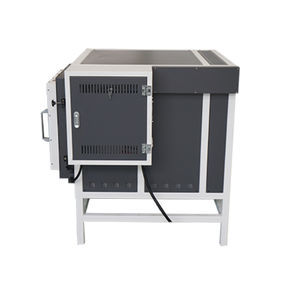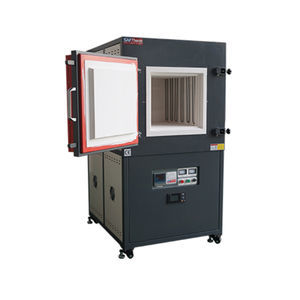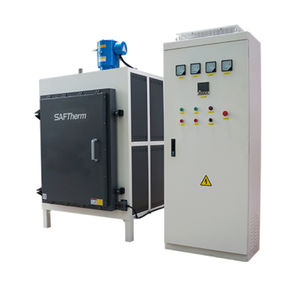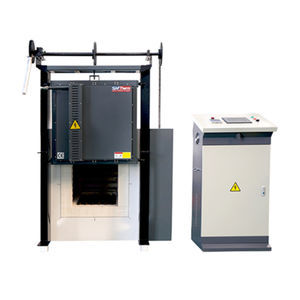
- Industrial machines and equipment
- Furnace and Heat Treatments
- Chamber oven
- Henan Sante Furnace Technology Co.,Ltd.
Chamber furnace STD-56-14heat treatmentannealingsintering
Add to favorites
Compare this product
Characteristics
- Configuration
- chamber
- Function
- heat treatment, annealing, sintering, quenching, tempering, thermal
- Other characteristics
- horizontal, batch
- Maximum temperature
1,400 °C
(2,552 °F)- Width
350 mm
(13.78 in)- Height
350 mm
(13.78 in)- Depth
500 mm
(19.69 in)
Description
The 1400℃ manual door industry furnace is used for quenching, tempering, normalizing, annealing and other heat treatment processes of metal materials, and can also be used for sintering of non-metallic ceramic materials. It is suitable for small batch production and tests in laboratories and factories.
Features
Furnace Shell
The shell is made of metal Q235 low-carbon steel, and the surface is electrostatically resistant and anti-corrosion.
Strong metal frame shell structure, low furnace surface temperature.
The side-opening furnace door structure, the left hinge is fixed, and the operation is convenient.
Refractory
Multi-layer thermal insulation design, double-layer light refractory brick lining with strong structure, high-strength stacking and splicing, no asbestos, low heat loss and low energy consumption
Heating System
The high-quality SIC heating element is safely and firmly installed on both sides of the furnace, which is energy-saving and efficient, and has a long service life
Heating on both sides (left and right sides), so as to achieve good uniformity in the furnace
The silicon carbide bottom plate protects the bottom heating element, which has high mechanical strength, good thermal conductivity, and provides horizontal load bearing.
Catalogs
No catalogs are available for this product.
See all of Henan Sante Furnace Technology Co.,Ltd.‘s catalogsOther Henan Sante Furnace Technology Co.,Ltd. products
Industrial Chamber Furnace
Related Searches
- Furnace
- Chamber furnace
- Electric furnace
- Heat treatment furnace
- Laboratory furnace
- Combustion furnace
- Gas furnace
- Tunnel furnace
- Industrial furnace
- High-temperature furnace
- Controlled atmosphere furnace
- Automatic furnace
- Vacuum furnace
- Annealing furnace
- Programmable furnace
- Thermal furnace
- Horizontal furnace
- Sintering furnace
- Quenching furnace
- Vertical furnace
*Prices are pre-tax. They exclude delivery charges and customs duties and do not include additional charges for installation or activation options. Prices are indicative only and may vary by country, with changes to the cost of raw materials and exchange rates.












